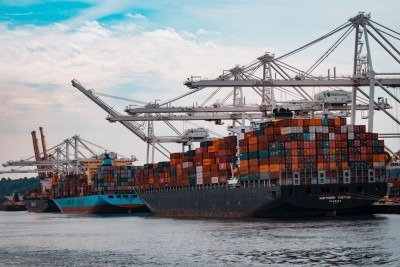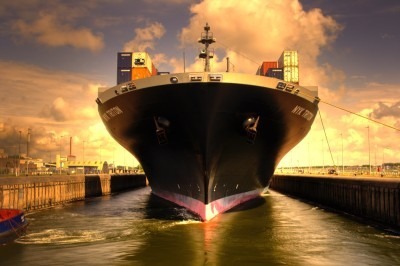Examining the importance of hydrodynamic interaction

Wind loads on large container ships are studied within the Windlass JIP (www.marin.nl/jips/windlass). Photo by Andy Li on Unsplash
When a ship enters a lock or passes under a narrow bridge, the hydrodynamic effect is obvious, but hydrodynamic interaction also plays a role in canals, fairways and port areas. The increase in ship sizes stretches the safe use of existing infrastructure.
When large vessels and a restricted fairway are combined with a fast sailing speed, for instance due to high winds, this can lead to dangerous situations. An official report into the grounding of the Ever Given in the Suez Canal hasn’t been published yet, but experts suggest that hydrodynamic interaction effects between the ship and canal banks have played a major role.
Yangtzekanaal study
Hydrodynamic interaction is also an important factor for sailing vessels in encounter and overtaking manoeuvres in confined waters. Ship-ship interaction has been included in a real-time simulation study for the approach to Eemshaven/ Emden where fast-sailing car carriers were overtaking slower sailing ships. More recently, encounter manoeuvres in the Yangtzekanaal in the port of Rotterdam were studied. This 570 m wide port basin is used for two-way traffic by ULCSs. Using real-time simulations, the possibilities and restrictions for such encounter manoeuvres in strong winds were investigated. The available width is significantly less than the total width as one side of the basin features a container terminal, while the opposite side is used by waiting inland barges. The two ULCSs do not have the full width available as they must keep sufficient distance at the sides to limit the forces and motions caused by hydrodynamic interaction from both the moored vessels.

Clear hydrodynamic interaction: a ship entering the lock in IJmuiden. Photo by Arjan van den Berg on Unsplash.
CFD & Dynamic mooring analysis
The interaction forces and the motions of the moored ship are smaller when the passing ship is at a larger distance and sailing at a lower speed. Passing distances which are too close or too far would hamper port accessibility. The required distance and permissible speed of the passing ships needed to keep motions within the limits to allow safe operations can be determined using CFD and Dynamic Mooring Analysis (DMA). CFD calculates the hydrodynamic interaction forces on the ships and DMA is used to compute the response of the moored ship. Thus including hydrodynamic interaction in both manoeuvring simulations and DMA strategies for optimal use of the existing infrastructure could be developed.
The trend to increase the size of ships means that hydrodynamic interaction is relevant in more and more situations, but all the tools are available to include this aspect when designing infrastructure or developing operational procedures.
Johan Dekker | j.dekker@marin.nl

